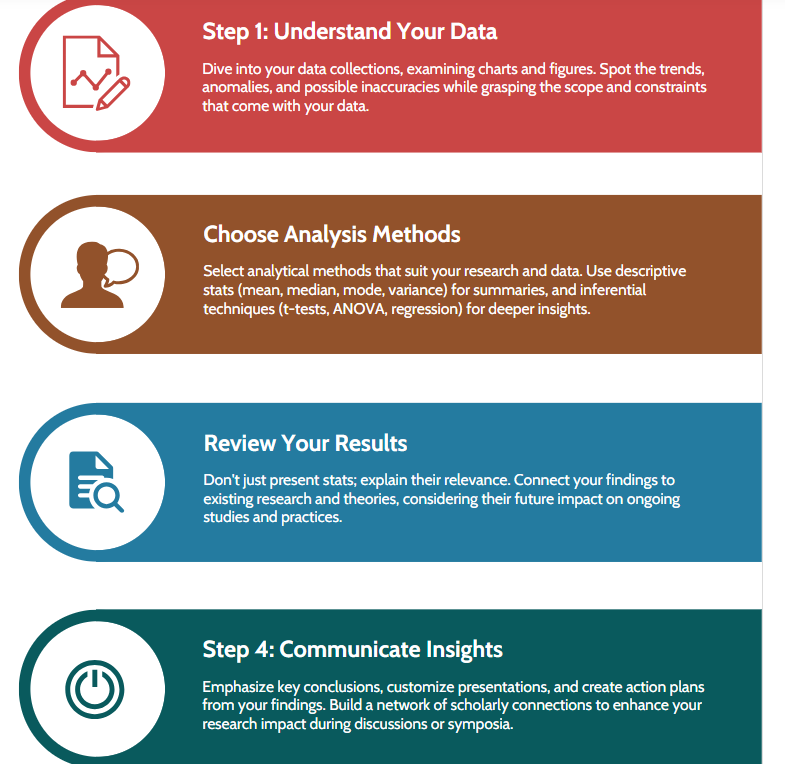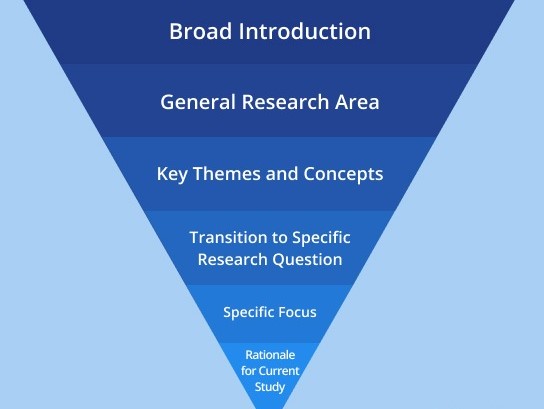
Table of Contents
The results section of a nursing paper is the heart of your research. It presents the findings of your study, providing evidence to support your hypothesis and answer your research question. A well-structured and clearly presented nursing paper results section is crucial for conveying your findings accurately and engagingly to your readers.
This article will guide you through the process of writing a compelling nursing paper results section, ensuring your research findings stand out and make a lasting impact.
What is the Essence of a Nursing Paper Results Section?
The essence of a nursing paper results section is to present the findings of the research study in a clear, concise, and objective manner. This section should not interpret the findings or draw conclusions; it should simply report the data collected.
The nursing paper results section should be structured logically, typically following the order of the research questions or hypotheses. Tables, figures, and charts can be used to present the data visually, making it easier for readers to understand. However, it is important to note that the nursing paper results section should not simply repeat the data presented in the tables and figures. The text should provide a summary of the key findings, highlighting any significant patterns or trends.
Remember that the goal of the nursing paper results section is to provide readers with a clear and concise understanding of the research findings, setting the stage for the discussion section where the implications and limitations of the study will be explored.
Steps to Writing a Stellar Nursing Paper Results Section
1. The Foundation: Understanding Your Data
Before you even begin writing, you must thoroughly understand your data. This includes:
- Familiarize yourself with the raw data: This involves reviewing your data sets, graphs, and tables, noting patterns, outliers, and any potential biases.
- Choose appropriate statistical analysis: Employ the statistical methods most suitable for your research question and data type. This might include descriptive statistics, inferential statistics, or other specialized analyses.
- Interpret your results: This involves going beyond simply reporting the data and understanding the significance of your findings within the context of your research question and existing literature.

2. Structure: A Clear and Logical Flow
The nursing paper results section follows a consistent structure, guiding readers through your findings in a logical and easy-to-follow manner:
- Introduction: Start with a brief introduction that reiterates your research question and the objectives of your study. This provides context for the reader and sets the stage for the presentation of your findings.
- Descriptive Statistics: Present the characteristics of your sample and any relevant demographic data. This helps the reader understand the context of your results.
- Presentation of Findings: This is the core of your nursing paper results section. Present your key findings in a clear and concise manner, using tables, figures, and text to convey the data.
- Statistical Significance: State the statistical significance of your findings, highlighting the level of confidence you have in your results.
- Discussion of Findings: Briefly interpret the significance of your results, connecting them back to your research question and previous research in the field. Avoid drawing conclusions or making recommendations in this section, as those are reserved for the discussion section.
3. Text: Clear, Concise, and Engaging
The text accompanying your tables and figures is crucial for guiding the reader through your findings.
- Keep it concise: Use clear and precise language to avoid unnecessary jargon and maintain a focused narrative.
- Provide context: Explain the meaning of each finding, linking it to the research question and the broader context of your study.
- Avoid redundancy: Don’t repeat information already presented in tables or figures. Instead, focus on highlighting the key takeaways and their implications.
- Engage the reader: Use active voice whenever possible to create a more engaging and accessible narrative. Avoid passive voice, which can make your writing sound dull and impersonal.
4. Tables and Figures: Visualizing Your Data
Tables and figures are essential for effectively presenting complex data. They allow readers to quickly grasp the key trends and patterns in your research.
- Choose the right format: Select the most appropriate format for your data – a table for numerical data and a figure for trends and relationships.
- Label clearly: Ensure all tables and figures have clear labels and captions.
- Use consistent format: Maintain a consistent format for all tables and figures throughout your nursing paper results section.
- Avoid redundancy: Don’t simply replicate the data in both tables and figures. Instead, use them to complement each other, presenting different aspects of your findings.
5. The Power of Evidence-Based Writing
The nursing paper results section is not a place for personal opinions or subjective interpretations. Instead, your writing must be grounded in evidence, relying on:
- Empirical Data: Back up all claims and interpretations with data from your study. Use tables, figures, and statistical analysis to support your points.
- Literature Review: Connect your findings to the existing literature in your field. This establishes the context for your results and highlights the unique contribution of your research.
- Objectivity: Present your findings objectively, avoiding biases and personal interpretations. Focus on presenting the evidence as it is, allowing the reader to draw their own conclusions.
Common Pitfalls in Writing a Nursing Paper Results Section
The nursing paper results section is the heart of your research paper, presenting the findings that support your hypothesis and answer your research question. It is a crucial section that requires careful attention to detail and clear, concise communication. However, many students and researchers fall prey to common pitfalls that can undermine the impact of their research. This section addresses these pitfalls and provides practical solutions to help you write a compelling and effective nursing paper results section.
Pitfall #1: Lack of Clarity and Organization
A poorly organized nursing paper results section can leave readers confused and unable to grasp the significance of your findings. To avoid this, prioritize clear structure and organization.
- Divide your results into logical sections: Group similar data points together, and use headings and subheadings to guide readers through the information.
- Present the data in a logical order: Follow a natural progression, often from descriptive statistics to inferential statistics.
- Use clear and concise language: Avoid jargon and technical terms that might be unfamiliar to your audience.
Pitfall #2: Misinterpreting or Over-Interpreting Results
The nursing paper results section should objectively present the data without drawing premature conclusions. This is a delicate balance – you want to highlight important findings without making claims that are not supported by the evidence.
- Stick to the facts: Report the findings as they are, avoiding subjective interpretations or personal opinions.
- Don’t overstate the significance: Focus on the data and let it speak for itself. Avoid exaggerated claims or sweeping generalizations.
- Acknowledge limitations: Mention any potential biases or shortcomings in your study that might have influenced the results.
Pitfall #3: Neglecting Visual Aids
Visual representations of data can be powerful tools in the nursing paper results section. They can help clarify complex information, highlight trends, and make your research more accessible and engaging.
- Use appropriate graphs and tables: Choose the visual aids that best suit the type of data you are presenting.
- Ensure visual clarity: Make sure all graphs and tables are properly labeled, and that the data is easy to interpret.
- Use visuals strategically: Don’t overload the reader with unnecessary visuals. Only include those that contribute significantly to understanding your findings.

Pitfall #4: Failing to Connect the Results to the Research Question
The nursing paper results section must directly address the research question posed in the introduction. It should clearly demonstrate how the findings contribute to answering the question and achieving the study’s objectives.
- Reiterate the research question: Remind the reader of the central question guiding the research.
- Explain the relevance of the findings: Clearly connect each result to the research question and highlight its implications.
- Summarize the findings: End the section with a concise summary of the main findings and their implications.
Pitfall #5: Neglecting Ethical Considerations
When writing a nursing paper results section, ethical considerations play a crucial role. Ensure your research complies with ethical guidelines and that your results are presented in a responsible and respectful manner.
- Protect participant privacy: Avoid disclosing identifiable information about participants.
- Report results accurately: Don’t manipulate or misrepresent the data to fit a preconceived narrative.
- Acknowledge any potential harm: Report any unexpected adverse events or ethical concerns that arose during the research process.
The nursing paper results section is a critical component of your research paper. Avoiding these common pitfalls can ensure that your findings are communicated effectively, providing valuable insights and contributing to the advancement of nursing knowledge. Remember, clarity, organization, objectivity, and ethical considerations are essential for presenting a compelling and impactful results section.
Examples of Effective Nursing Paper Results Section Writing
Example 1:
- Research Question: Does a personalized education program improve patient adherence to medication regimens for chronic conditions?
- Result: “The personalized education program group demonstrated significantly higher medication adherence rates (85%) compared to the control group (62%) at the 3-month follow-up (p < 0.05).”
Example 2:
- Research Question: Is there a correlation between nurses’ perceived job satisfaction and patient satisfaction scores?
- Result: “A statistically significant positive correlation (r = 0.65, p < 0.01) was found between nurses’ perceived job satisfaction and patient satisfaction scores, suggesting that higher levels of job satisfaction among nurses are associated with higher patient satisfaction ratings.”
Example 3:
- Research Question: Does implementation of a new wound care protocol reduce the incidence of hospital-acquired pressure ulcers?
- Result: “After implementing the new wound care protocol, the incidence of hospital-acquired pressure ulcers decreased from 4.2% to 2.1% over a 6-month period, demonstrating a statistically significant improvement (p < 0.05).”
Frequently Asked Questions about Nursing Paper Results Section
The results section of a nursing paper is often the most challenging to write, leaving many authors feeling uncertain about how to present their findings effectively. This section holds immense importance, as it showcases the essence of the study and forms the foundation for interpreting its implications. If you’re grappling with the complexities of crafting a compelling nursing paper results section, you’re not alone. This section clarifies the common queries about this crucial section, providing you with a roadmap to success.
1. What Exactly Should Be Included in the Nursing Paper Results Section?
The nursing paper results section serves as a platform to present the findings of your study in an objective, clear, and concise manner. This section should exclusively focus on the data you collected and should not include any interpretations or implications. Here’s what you should include:
- Descriptive statistics: This includes measures like means, standard deviations, frequencies, and percentages, providing a comprehensive overview of your data.
- Inferential statistics: If your study involved hypothesis testing, this section presents the results of statistical analyses, such as t-tests, ANOVAs, or regressions. Report p-values, effect sizes, and confidence intervals to support your findings.
- Tables and figures: These visual aids are essential for summarizing complex data and presenting key findings effectively. Ensure your tables and figures are labeled clearly, formatted consistently, and presented in a logical order.
- Textual description: Accompany your tables and figures with a clear and concise textual description. This should highlight the key findings, providing context and ensuring readers can easily understand the presented data.
2. How Can I Structure the Nursing Paper Results Section Effectively?
A well-structured nursing paper results section enhances readability and clarity. Consider the following steps to create a cohesive and logical flow:
- Organize findings by research question: If your study explores multiple research questions, organize the results section to align with these questions, ensuring each section addresses a specific research objective.
- Present findings in a logical sequence: Begin with descriptive statistics, followed by inferential statistics, and conclude with a summary of key findings. This progressive approach helps the reader understand the data and its significance.
- Maintain consistency in reporting: Use the same statistical methods throughout the section, maintaining consistency in how you present your findings. This avoids confusion and ensures a cohesive flow.

3. What are the Common Mistakes to Avoid in the Nursing Paper Results Section?
Mistakes in the nursing paper results section can undermine the credibility and impact of your study. Avoid these pitfalls:
- Overinterpretation: The nursing paper results section focuses solely on presenting data. Resist the temptation to draw conclusions or interpret findings. Save interpretations for the discussion section.
- Redundancy: Avoid repeating information across tables, figures, and text. Utilize these elements to complement each other, offering different perspectives on the same data.
- Lack of clarity: Use precise language and avoid jargon. Ensure your text is clear, concise, and easy to understand, even for readers outside your specific field.
- Unprofessional presentation: Utilize proper formatting, clear labeling, and consistent styles for tables and figures. Ensure visual aids are of high quality and enhance the overall presentation.
4. How Do I Ensure My Nursing Paper Results Section is Rigorous and Trustworthy?
Rigor and trustworthiness are paramount in research. The nursing paper results section should reflect these principles:
- Accurate reporting: Present the data truthfully and honestly. Avoid manipulating or selectively presenting findings to support a predetermined conclusion.
- Transparency: Be transparent about your data collection and analysis methods. This allows readers to assess the reliability and trustworthiness of your findings.
- Appropriate statistical analysis: Choose appropriate statistical methods based on your research design and data type. Seek guidance from a statistician if needed.
5. How Do I Integrate the Nursing Paper Results Section with Other Sections?
The nursing paper results section serves as a bridge between the methodology and discussion sections. Ensure smooth transitions by:
- Connecting findings to research questions: Clearly link each finding presented to its corresponding research question, ensuring the reader understands the context of the data.
- Setting the stage for discussion: Present findings in a way that naturally leads to the discussion section, where you will explore the implications and significance of your results.
6. Can I Use Software for Help with My Nursing Paper Results Section?
Several software programs can assist you in presenting your nursing paper results section effectively:
- Statistical software: Programs like SPSS or R can help with data analysis and generate tables and figures for your results section.
- Word processing software: Features like tables, charts, and equation editors in Microsoft Word or Google Docs can enhance the presentation of your findings.
- Presentation software: Tools like PowerPoint or Prezi can help you create professional-looking slides to present your results visually.
Crafting a compelling nursing paper results section is crucial for communicating the essence of your study. By focusing on clarity, conciseness, and objectivity, you can effectively present your findings and pave the way for insightful discussions about their implications. Remember, the goal is to present your data in a way that is both informative and engaging, allowing readers to grasp the significance of your research and its contribution to the field of nursing.
Key Takeaways for Writing a Strong Nursing Paper Results Section
- Understand your data: Thoroughly review your data and interpret its meaning within the context of your research question.
- Structure your findings logically: Present your results in a clear and concise manner, using tables, figures, and text to guide the reader.
- Use evidence-based writing: Support all claims and interpretations with empirical data and connect your findings to relevant literature.
- Avoid common pitfalls: Be mindful of over-interpreting results, drawing premature conclusions, and writing unclearly or disorganizing your findings.

By following these steps and utilizing the provided examples, you can write a powerful nursing paper results section that effectively conveys your research findings and makes a lasting impact on your readers. Remember, your nursing paper results section is the foundation of your argument, so present your findings with clarity, accuracy, and a commitment to evidence-based writing.
Get Professional Nursing Paper Writing Help
At Nursing Papers, we can help you to craft authentic and impactful nursing papers, from brainstorming to a polished piece. Our service covers topic suggestion, paper writing, proofreading, editing, formatting and plagiarism removal. Besides research papers, we can also assist you in writing essays, case studies and dissertations.







